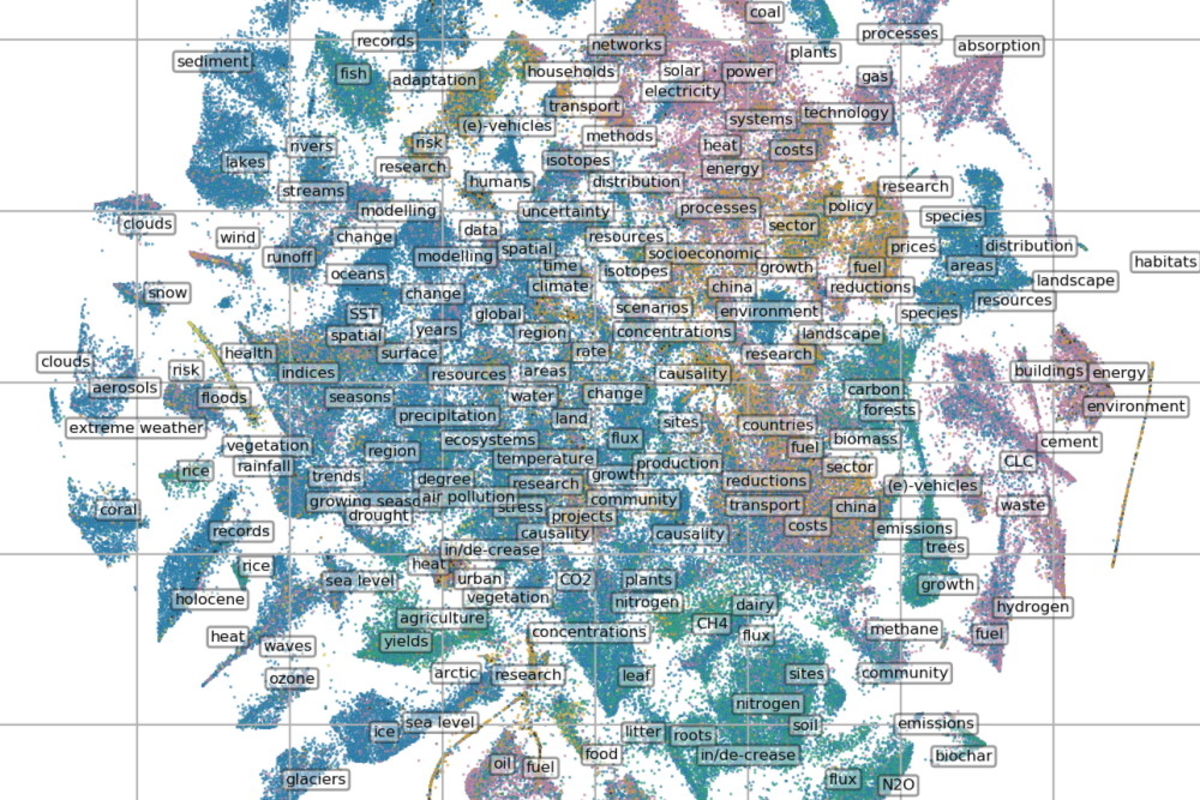New map grapples with rapid growth of climate change literature

Researchers have analysed more than 400,000 studies using big data technology, providing a new way of dealing with the rapid growth of scientific literature.
This landmark new study, which is the first to map out the content of hundreds of thousands of scientific articles covering the breadth of climate change research, suggests that research on climate solutions has so far been under-represented in UN climate reports. These research areas are often technical in nature, and have received little attention – so scientific agendas and even funding priorities should be revised.
This 'topography of climate change research' was produced in collaboration between the Berlin climate research institute MCC (Mercator Research Institute on Global Commons and Climate Change) and the Priestley International Centre for Climate at the University of Leeds. The study has been published in the renowned journal Nature Climate Change.
“In the new age of big literature, it is impossible for scientists to keep an overview of the publications even in their own field”, reports Max Callaghan, a researcher in the MCC's working group Applied Sustainability Science, who coordinated the study.
“We have now found and mapped out more than 400,000 studies on climate change from a single scientific literature database – the Web of Science. This is an enormous number, and half of these studies were published in the five years since the last Assessment Report of the Intergovernmental Panel on Climate Change (IPCC).”
The UN body has a mandate to provide regular, transparent, and comprehensive assessments of the scientific literature on climate change. The rapid literature growth poses real challenges to the IPCC, as well as to scientists attempting literature reviews on specific topics.
“Innovative machine learning techniques like topic modelling can help to understand what is going on in a complex and vast research field like climate change”, explains Callaghan. “Because the topic model is unsupervised, meaning the model discovers topics without human input, we can find things we didn’t know we were looking for”.
New research topics, for example on negative emissions, carbon capture or green cement, can be identified without prior knowledge of the field. By matching the documents with their citations in IPCC reports, the study shows that such fast-growing topics on technical solutions are less well represented than studies on the basic science of climate change.
Further analysis of IPCC citations against the map reveals that the social sciences are not under-represented in recent assessment reports.
“The IPCC does a good job in representing them in their assessments of the literature”, clarifies Callaghan. “However, many scholars are still very unhappy about the role of social science knowledge in IPCC reports. The problem may be more fundamentally about the low proportion in the climate change literature as a whole”.
Calls for more solutions-relevant IPCC assessments with prominent social sciences therefore also imply structural shifts in funding.
“Scientists need to provide knowledge maps to guide political actions on climate change”, says Jan Minx, Priestley Chair in Climate Change and Public Policy, and co-author of the study. “But purely manual assessments of the literature as commonly undertaken by the IPCC are reaching their limits. Our study demonstrates the power of big data applications to prepare IPCC assessments for the age of big literature”.
More information
The paper, published in Nature Climate Change, is titled 'A Topography of Climate Change Research' and is authored by Callaghan, M., Minx, J. and Forster, P.
